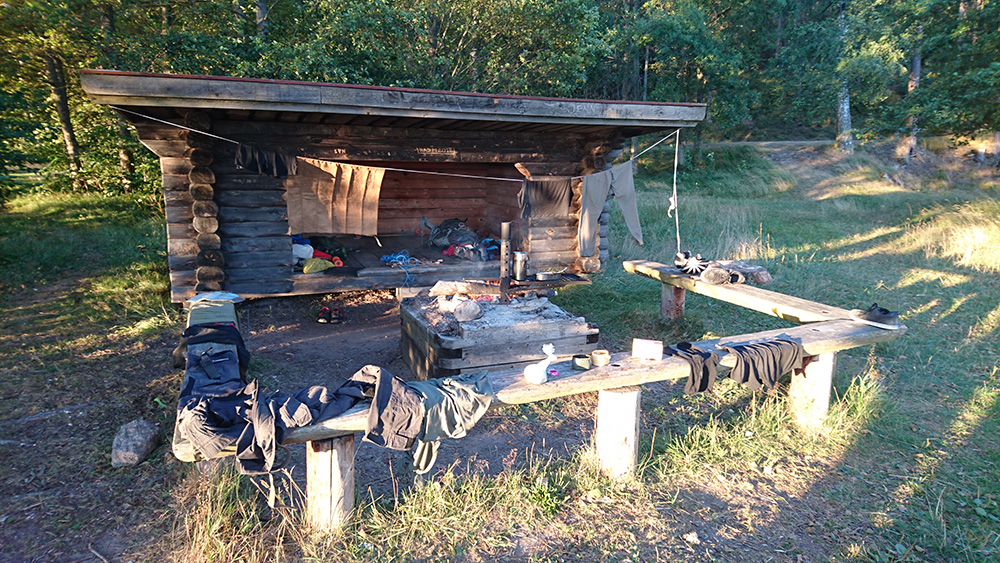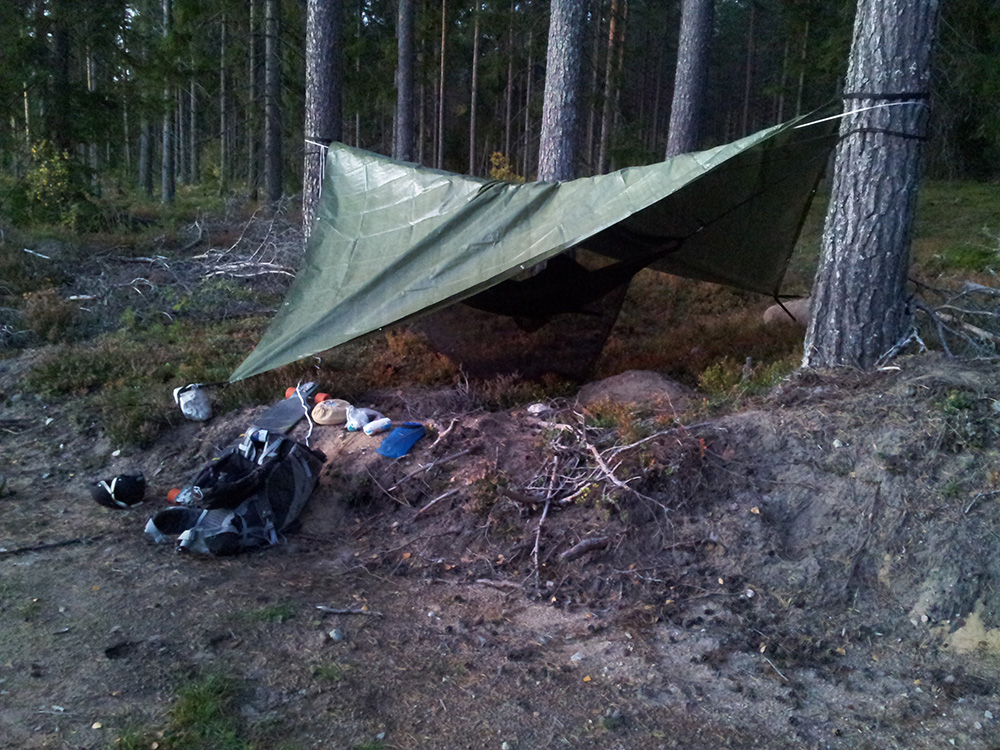We’ve gone through a lot of info already but this last post will be dedicated to rest of the gear I use. Much of it is just reusing stuff I already have to save on money, with occasional upgrades over time. But if you want to hear what’s the best from one of the best then I’d recommend checking out Adam Coltons packing video. I mean, check it out anyway, he’s a beast and he knows what he’s doing.
The stuff I mention and link is what I use and fits me but make sure to check around for other things, everyone has different tastes and preferences.
Lets start with what I’m actually wearing when riding. I always wear a skate helmet as mentioned previously. On my upper body I’ve been pretty happy with using a thin Merino-wool shirt, it keeps you pretty cool during the day and warm and snug when it gets late (maybe bring a windbreaker still). A light and stretchy pair of pants work great both in hot summer and cool spring/autumn. If you need more warmth then work with layers by bringing underclothes.
When it comes to shoes I’ve really just used what ever I’ve had on hand that’s too worn out for regular use. So they’re already worn in and I just use them for longboarding until they finally give up.
It’s preferable with pretty breathable ones with a somewhat hard sole to handle the footbreaking. Which is something skate shoes have trouble with, as they get worn out quickly as the sole is soft. Of course the most important point is that the shoes need to be comfortable as you’ll be riding in them for many hours.
A second set of comfortable clothes can be nice if you want to hang out with people and feel fresh. Though make sure to think of how much space and weight it’ll add. Which brings us to where to put all your stuff; because you’ll have a bunch of things you’ll want to bring with you.
I’m not going to go through every single item I bring, I’ll just go through the most important things. Do keep in mind that when packing it’s all too easy to just keep adding things you’ll be fine without so really think through what you really need and why. Because every kilo matters a lot as the more you have to carry, the heavier it is to push.
For myself I use a Osprey backpack with 68L of space but whatever you get just make sure to find one with a good waist-strap so you can offload the weight from your sholders onto your hips. And see to packing everything tight so you maximize the space you’re using as well as keeping things from rattling around in your pack.
As I mentioned in a previous post, make sure to get a good hydration system with around 3L of water. That’ll last you for a little more than half a days riding after which you either buy more water or do what I prefer:
just stop by someone's house and ask for a refill
It’s not that awkward and it works perfectly in Sweden. Sure, people might be a bit surprised at first when you swing around their house asking for water, but many quickly get curious and start asking questions. So usually I get to have a nice chat with interesting new people.
Lets get into camping gear. The last couple of years I’ve started using a hammock with a tarp. Add a sleeping mat & sleeping bag and it’s more comfortable than on the ground in my opinion. The mat is pretty new so haven’t really tried it out yet and the sleeping bag I use varies based on what part of the season I’m doing a trip in; I’ve kinda borrowed ones that fits my needs.
It can be a bit tricky to get the hammock to hang correctly, you need to get the right amount of slack in it to lay somewhat sideways. And it takes a few minutes of adjusting to get comfortable as things have a tendency to slide to the middle as you move around. At the same time the sides of the hammock is constantly pushing in on your body. But when everything is said and done, it can be close to perfect.
And don’t underestimate cold air blowing by under the hammock; insulate any point your body touches the hammock. At first I was hoping to save space or weight with a hammock but you don’t really.
I’m just quickly going to mention a few other things that are worth bringing: first aid kit, a small cooking burner, flint-steel, battery-pack, a compact towel, an inflatable pillow (or just use your pack), light reflector, headlamp, alcoholic soap, sporks, a good knife and/or small saw, duct tape, rope, skate tool and ear plugs.
I think that’ll have to do. I could probably go into endless detail into a lot of different things but I don’t think that wouldn’t actually give much valuable information. I hope you appreciated this series, maybe even started considering doing your own trips. Eitherway, if you have any questions or ideas then contact me using the links at the bottom of the page.
Happy boarding!


